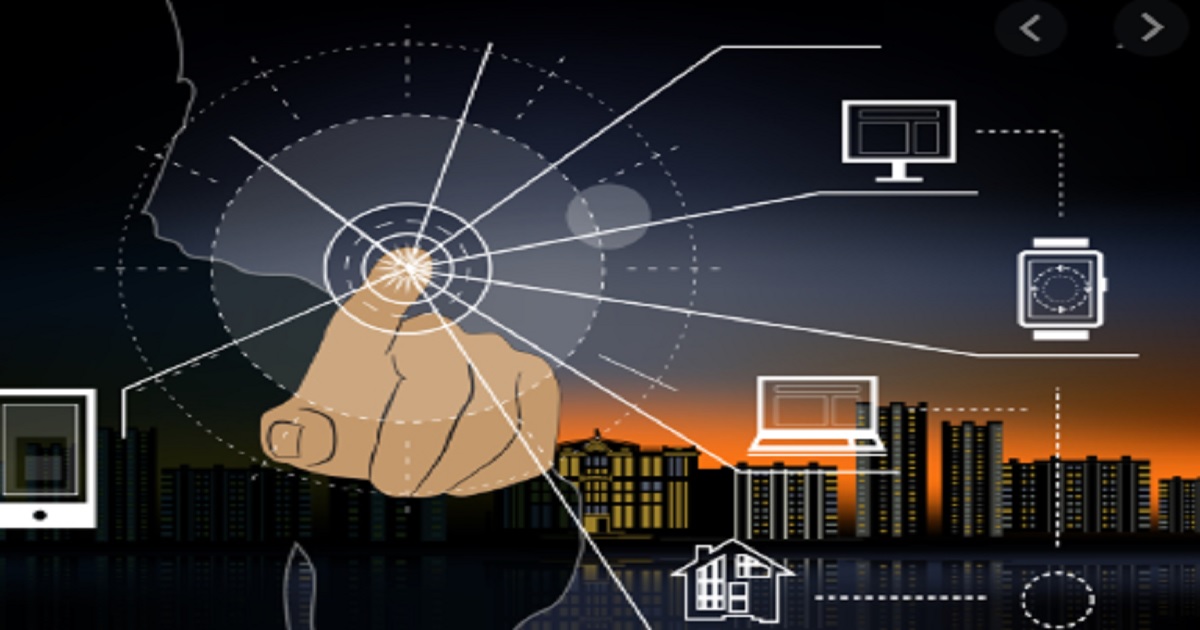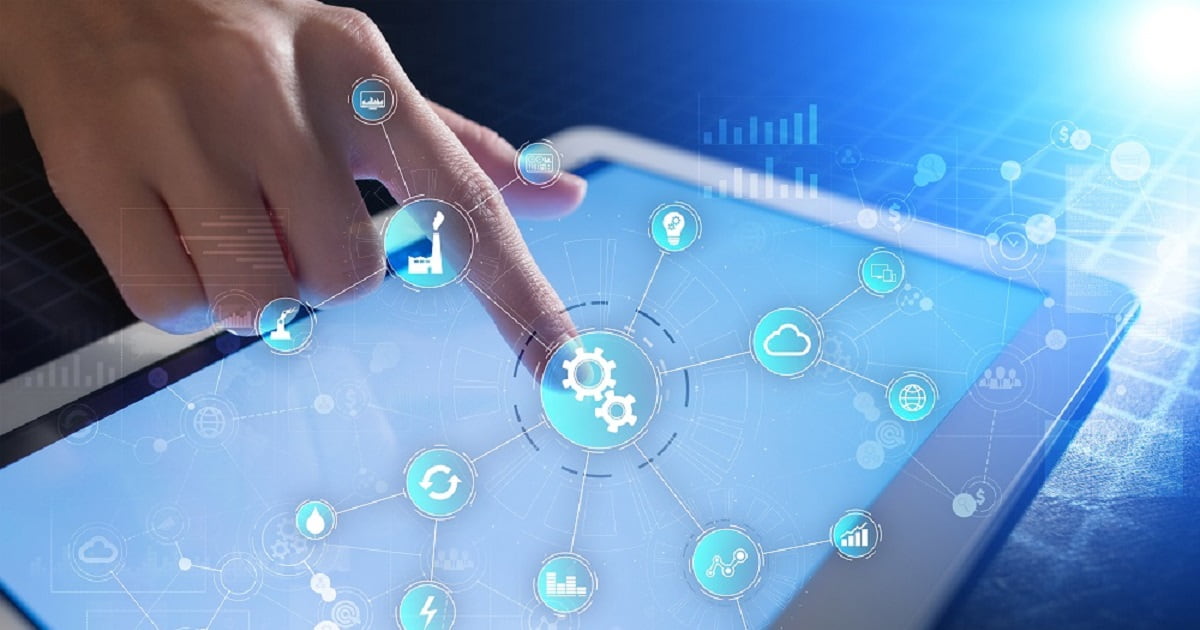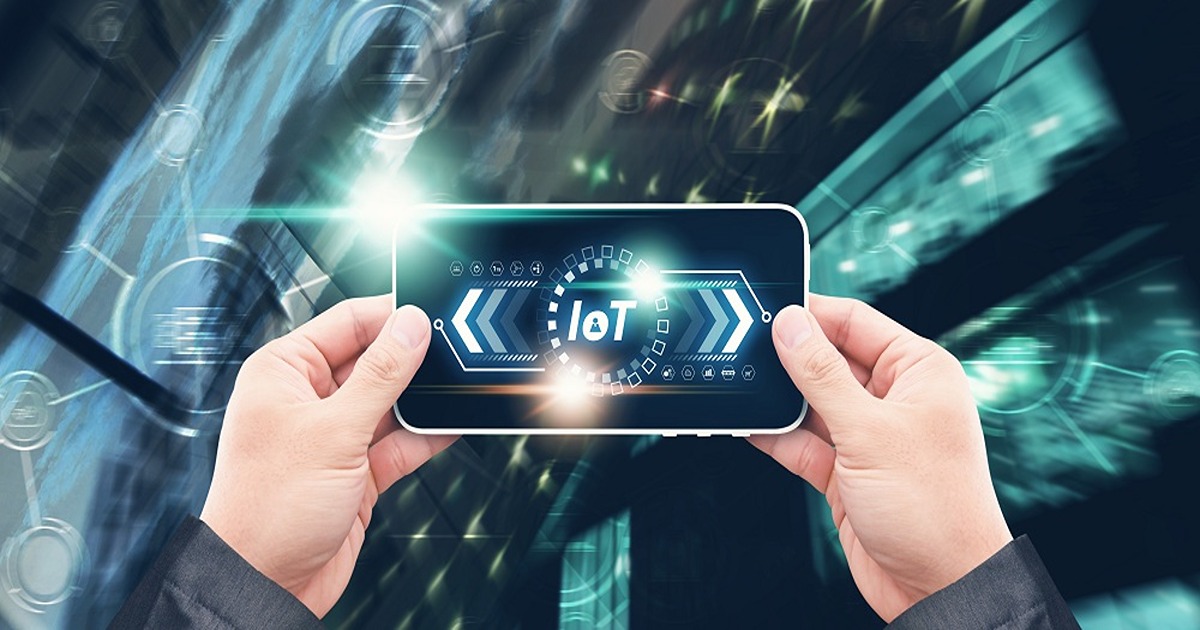
IoT Security
Article | June 27, 2023
Modern computing devices can be thought of as a collection of discrete microprocessors each with a dedicated function like high-speed networking, graphics, Disk I/O, AI, and everything in between. The emergence of the intelligent edge has accelerated the number of these cloud-connected devices that contain multiple specialized sub-processors each with its own firmware layer and often a custom operating system. Many vulnerability analysis and endpoint detection and response (EDR) tools find it challenging to monitor and protect devices at the firmware level, leading to an attractive security gap for attackers to exploit.
At the same time, we have also seen growth in the number of attacks against firmware where sensitive information like credentials and encryption keys are stored in memory. A recent survey commissioned by Microsoft of 1,000 security decision-makers found that 83 percent had experienced some level of firmware security incident, but only 29 percent are allocating resources to protect that critical layer. And according to March 2021 data from the National Vulnerability Database included in a presentation from the Department of Homeland Security’s Cybersecurity and Infrastructure Agency (CISA) at the 2021 RSA, difficult-to-patch firmware attacks are continuing to rise. Microsoft’s Azure Defender for IoT team (formerly CyberX) recently announced alongside the Department of Homeland Security a series of more than 25 critical severity vulnerabilities in IoT and OT devices
Read More

IoT Security
Article | July 17, 2023
The survey data I’m referring to comes from a study conducted by the Eclipse Foundation about the adoption of commercial Internet of Things (IoT) technology. The aim of the study was to get a better understanding of the IoT industry landscape by identifying the requirements, priorities, and challenges faced by organizations deploying and using commercial IoT technologies. More than 350 respondents from multiple industries responded, with about a quarter of respondents coming from industrial production businesses. While this survey was not solely focused on the manufacturing and processing industries, its results reflect the general business community’s IoT adoption at the end of 2019. As such, it is a pre-COVID-19 snapshot of IoT adoption.
Read More

Industrial IoT, IoT Security
Article | July 12, 2023
2022 looks bright for power optimization! The vibrant research and development in Internet of Things (IoT) is fueling the expansion of wireless monitoring solutions and enabling giant leaps in terms of low-power design. A longer lifetime for your batteries, and thus for your device, is a dream about to come true.
We have gathered some of the most notable power optimization trends that are getting us all excited for 2022…
5G, the next era of broadband cellular networks will offer improved power saving capabilities
The next wave of wider 5G cellular technology is designed to support various new highly challenging industrial use cases. These usually require increased hardware complexity and more processing, together with higher processing power. These requirements can raise power consumption quite significantly.
Smart power consumption and energy efficiency are thus becoming keys for the success of these applications and 5G technology.To that extent, 5G New Radio (NR) has progressed swiftly. The new 3GPP™ release is designed to significantly improve the performance, flexibility, scalability, and efficiency of current mobile networks. Improved power saving features now allow IoT developers to get the most out of the available battery capacity. This could make all the difference for new IoT use cases and efficiencies.
A new generation of sensors are optimized for low power technologies
New families of ‘breakthrough’ sensors, based on anultra-low power architectureare optimized for use in compact wireless devices. These sensors offer a richer set of functionalities and can be combined to create new insights (sensor fusion). One of the greatest challenges facing developers of these small form-devices is power consumption. Aware of these limitations, hardware manufacturers have been working hard to address them. Integrated circuit designs and techniques are now using less power while smart processing capabilities are enabling the sensors to intelligently manage sensing functionalities,delivering ultra-low power performance for best-in-class power consumption. The use of advanced Low Energy Bluetooth and wireless protocols (e.g. Bluetooth Low Energy (BLE) or ZigBee Green Power) also allows the transmission of data to the gateway more efficiently compared to prior solutions, opening new possibilities for developers.
Big Data, Analytics, Machine Learning and Edge computing are picking up the pace
The explosion in data volume and diversity is forcing organizations to rethink the way they process the information. Indeed, capturing, sending and processing the information in the cloud can be taxing for the network, the storage and the computing infrastructures which demands more processing power, hence the need to keep the transmission window as short as possible.
This has led to the development of advanced devices capable of collecting, processing and storing data autonomously before the data is sent to the servers. This concept is calledEdge computing. By reducing the need for data to be streamed through the networks, diminishing computing and processing costs,Edge computing contributes to optimizing power performance, whilst delivering quality data in a more sustainable way.
The rise of DevOps and new IoT Device Management platforms are contributing to better efficiency and better devices
The rise ofDevOpshas been swift. Derived from Development and Operations, ‘DevOps’ teams are responsible for making sure that the infrastructure is being maintained properly.With the help of IoT Device Management platforms—which are a central part of today’s IoT ecosystems— DevOps teams can better manage, scale and operate their fleet of devices remotely and reduce long-term operational costs.One of the areas that benefits from the rise of DevOps implementation is power supply optimization, as more efficient protocols such as Lightweight Machine to Machine (LwM2M) allow for device and battery monitoring, remote device actions and faster communication.
Harvesting technologies are becoming more effective
Power harvesting technologies include processes where energy from ambient sources such as the sun, temperature, movement or wind, is captured and stored to power wireless autonomous devices. Now gaining experience,harvesting technologies can exploit natural resources better than ever before.
As a result,the gap between the power requirements of embedded systems and the energy generated by energy harvesting systems is finally closing. Industrial applications for these technologies are still very limited, but coupled to efficient rechargeable batteries, they can present new opportunities for devices deployed in wild remote areas.
Power optimization tools are becoming increasingly exhaustive and reliable
Battery optimization is everyone's business and needs to be considered throughout the overall system performance analysis, from prototyping to deployment and on toward maintenance cycles.
Several innovating tools haveappeared on the market over the past few years and developers have now access toa rich ecosystem of tools to analyze their overall system performance.
Wisebatt for Saft for example can help creating a virtual prototype and simulate its consumption.Deutsche Telekom’s IoT Solution Optimizergoes even further. You can model the complete system to identify potential energy consumption issues or leaks. The system can not only recommend the right combination of power saving features based on your use case, but also can help you visualize how communication payload size, protocol use and communication frequency impact your battery life.
When at the prototype stage,Qoitec Otii solution measures in real time the consumption of your device at various temperatures, up to the measurement of the firmware and hardware operations without the need for expensive testing. These tools are constantly enhanced and improved to deliver better analysis and more accurate data.
With an increased awareness from IoT developers of the stakes of power consumption and the growing rate of low-power innovations, batteries are now able to outlive the devices they’re in. This opens the doors tomany new markets and applications and above all to more sustainable consumption patterns. When we told you the future looks bright, we weren’t joking!
Read More

Software and Tools
Article | September 23, 2022
For businesses to grow, they must be armed with the right technology and implement the right strategies to get a high return on their investments. With an IoT strategy, you can successfully make sense of the high volumes of data generated. IoT is about having devices with sensors communicate with other devices over the internet and share real-time data or parameters to maintain healthy system processes. Sharing and transferring data in real time over the cloud creates a lot of data that needs to be carefully managed.
Not having a streamlined method to control and manage the volume of data to capture, send, transmit, and receive over the cloud poses many space constraints as the data piles up quickly. Furthermore, deciding what data to keep and what to discard, how long you need the data, and for what purpose are all critical. Some standard IoT devices include sensors, lights, alarms, and cameras that a smartphone can control.
Learn about the importance of data management in establishing an IoT framework below.
The Top Reason for Establishing an IoT Framework Needs Data Management
Learning from past data trends to make future decisions in an IoT framework is critical. Data management acts as a layer between the IoT devices generating the data and the software accessing the data for analysis and services. It helps review, analyze, and navigate the massive amounts of structured and unstructured data. Defining which actions trigger responses to create data in your process is necessary to monitor your product and services and to keep your customers satisfied. In an IoT framework, managing the large amounts of data that are generated and collected means learning from the past and predicting what will happen in the future.
Why is Data Management for the IoT Framework Crucial for Medium and Large Enterprises?
Creating a better product is essential to add more value to your product offerings and avoid recalls, keeping your brand reputation at stake. The more data, the deeper the analysis, and the more refined the product, the greater the need to manage large amounts of data efficiently.
The future of IoT data management is promising when it comes to improving all aspects of your business processes, mainly controlling the automation and manufacturing processes and software triggers. Check out the in-depth benefits of data management in IoT.
Data management in IoT helps conduct a field test of your IoT products before deployment.
Improve the uptime of your business production lines and equipment.
Perform seamless decision-making for planning, scheduling, and execution systems to meet the changing customer and market demands using accurate and current data.
Data management helps efficiently deploy IoT solutions such as enterprise resource planning (ERP), enterprise asset management (EAM), and manufacturing execution systems (MES) in manufacturing businesses.
Data management helps remote monitoring of automation systems and robotic systems in industrial IoT needs current data and management.
Improve production flexibility and responsiveness by welcoming smart manufacturing using IoT data management.
When it comes to the data management of IoT devices, different types of data management systems take care of structured and unstructured data.
8 Data Management Systems for Your Enterprise IoT Devices
IoT device management means registering, organizing, monitoring, and remotely managing IoT-connected devices at scale. Various cloud architectures with different data management systems help with efficient IoT device management. In addition, equipment data, sub-meter data, and environmental data help track the performance of your IoT devices through IoT data collection. Let's find out how data management systems for IoT devices would help develop an IoT strategy for your large enterprise.
IoT gateway device management involves many steps in keeping your operations healthy and maximizing uptime. These are provisioning, authentication, configuration, control, monitoring, diagnostics, software updates, and maintenance. In addition, data management systems aim to make data available for analysis in the long term. The different data management systems are as under:
Querying
Production
Collection
Aggression/Fusion
Delivery
Pre-processing
Storage, updating and archiving
Processing or analysis.
These data management systems capture, organize, store, retrieve, and analyze data when required. Sorting out the data management in IoT will initiate your internet of things database scalability. An IoT data lifecycle is built around the data management systems in the data flow, which acts as guidelines or checkpoints for a smooth data flow across your IoT platform. Let us unfold them below.
Seven Guidelines for Cost-Effective IoT Data Management
• Querying: Accessing and retrieving data for temporary monitoring. For example, you could ask IoT devices or sensors for data in real time to learn more about trends and patterns.
• Production: Sensing and transferring data by the "things" or IoT devices in an IoT framework is the data production phase. Pushing the data to the cloud network and the IoT database servers and reporting it to the interested parties. This rich data has different formats such as audio, video, or image content, and is time-stamped and geo-stamped.
• Collection: Collecting and retrieving data for a predefined time interval and sharing it with the governing components within the gateways is a part of the collection. Filtering out valuable data and compressing it accordingly helps seamless data transfer. It is also a part of data collection.
• Aggression or fusion: Part of the aggression is real-time data transmission across the network to increase the rate of data streaming over the limited bandwidth. It pulls together information from different points of contact and reduces the amount of information that needs to be stored and sent.
• Delivery: Collating the data from multiple touch points across the IoT framework and summing it up for the final responses is a part of the data delivery management system. Making data ready for permanent data storage is also a part of it.
• Preprocessing: Removing redundant, missing, and incomplete data and making all the data unified is a part of preprocessing. Data cleaning is also one of the preprocessing methods applied to data mining.
• Storage, Update, and Archiving: Storing data in an organized way for long-term offline usage or big-data systems is a part of the storage data management system. It can be decentralized or centralized as per the required capabilities.
• Processing or Analysis: Retrieval of stored packets of data accessed for an efficient analysis is a part of data processing or analysis in a data management system.
Whenever handling large amounts of data, an efficient data management system will solve numerous problems concerning your IoT strategy, as discussed above. Find out exactly what can keep you from implementing IoT.
5 Growth Challenges in Data Management for IoT Technology
High Initial and Ongoing costs:
Upgrading the hardware and software infrastructure that is already in place, hiring IoT-trained staff, and building an IoT infrastructure will all require upfront and ongoing costs.
Vulnerability:
Your IoT security strategy is a critical aspect of your IoT platform strategy. Multiple data points for structured and unstructured data captured, transmitted, stored, and retrieved by software come with security risks.
Procuring Quality Hardware:
Finding compatible hardware for your requirements and building an infrastructure around them can take a while regarding decision-making for scalability. In addition, hardware must remain supportive of the quick adoption of future software innovations.
Installation and Upkeep of Hardware Infrastructure:
Setting up a complex IoT strategy with the implementation of IoT data management, infrastructure, security, and more takes time and expertise. One of the other big worries is keeping the hardware infrastructure in good shape so that security can't be broken.
Constraints on Scalability and Agility:
The humungous IoT data traffic poses a severe concern for appropriate control of the data storage, retrieval, analysis, monitoring, and everything aligned with IoT data management. Also, the fact that IoT data doesn't last as long as other types of data is a risk to the way data flows and is collected.
Now, let us figure out how to implement IoT that aligns with your business objectives.
How to Implement IoT in Line with Your Business Goals
A complete analysis of your immediate and long-term business objectives is critical as it helps decide which data to keep and which to discard after how much time. Every byte of data you hold and analyze comes with a cost for storage, retrieval, and security, which can be a barrier to implementing IoT for your business. Identifying IoT data collection helps you align your IoT implementation strategy with your business objectives. Here are a few ways to address your implementation of IoT.
Consider the use cases of IoT data management as per the processes involved in your business.
Implement security protocols for encryption and restricted access as per the type of business data.
Organize training for the existing workforce and hire skilled professionals in IoT.
Understand your business's data requirements, including the data collection process.
Allow enough budget for IoT infrastructure and resources.
Consider the design and development of the product as per the customer's behavior.
Consider the impact of the environmental conditions affecting your business.
Measure real-time performance metrics using a suitable IoT sensor to streamline your process.
Take automated decisions with the help of AI once IoT sensors recognize the performance gaps.
Choose the right IoT platform that defines how you communicate and handle data.
Understand that IoT implementation is a complex process and needs commitment.
Collect only the important data and statistics for a smooth workflow and to lower the cost of putting IoT into place.
Taking into account where your storage and production lines are located, choose the best ways to gather, organize, and analyze your data.
Use cold path analytics for the long term and hot path analytics for real-time data storage.
Building infrastructure with scalability in mind will help small businesses grab market share quickly and efficiently. As a result, medium-sized enterprises will find prominence in their industry. Using data visualization in business intelligence allows for rapid optimization of your IoT devices and for controlling data management costs in the long run without negatively impacting performance. Explore more about IoT data visualization down below.
Role of Data Visualization in IoT for Business Intelligence
With IoT data visualization, you can optimize business processes by applying visualization business intelligence to get your business ready to scale. Discover the role of data visualization in your IoT strategy.
Make sense of the data you've collected or saved.
Patterns and trends should be recognized.
Check the data for inconsistencies and errors. The output should then be visualized over time for analysis and monitoring.
IoT infrastructure and devices improve performance and streamline the IoT data flow.
Analyze real-time data correlations across multiple business verticals using the IoT communication platform.
Make future decisions based on the data captured in the past.
Get actionable insights on customer behavior and
Identify the factors impacting your business.
Once you identify the gaps in business processes, you can make changes to the process and further improvise. Creating an optimized workflow and detecting errors and faults in a process early are the primary goals of data management in an IoT strategy. Tackling vulnerabilities in data security and data redundancy helps the cost-effective implementation of IoT for small businesses, opening avenues for scalability. With IoT data management, you can also optimize your products to make customers happier and get a bigger share of the market, which is great for your business's growth.
Summarizing
With secure access control, encryption, software updates, endpoint security, and communication protocols in place, the relentless power of data visualization for analyzing and monitoring the captured data has proved to be unmatched. Bringing resilience and giving a rapid boost to the scalability of your medium and large enterprises is now becoming a norm with organized IoT data management.
FAQs:
• What is the most significant benefit of IoT?
IoT helps devices or sensors report real-time data for smooth interconnected production operations. In addition, IoT keeps healthy functions throughout and minimizes the turnaround time for troubleshooting and maintenance.
• What are the three types of IoT?
Depending upon the needs from time to time, the three types of IoT include short form, medium form, and long form. The short form meets immediate needs, the medium form meets future needs, and the long form keeps the system running smoothly.
• How does data analytics help IoT?
Effective process optimization is possible by analyzing the data generated in an IoT framework. It helps boost efficiency, and connectivity, cut costs and unlock scalability.
Read More